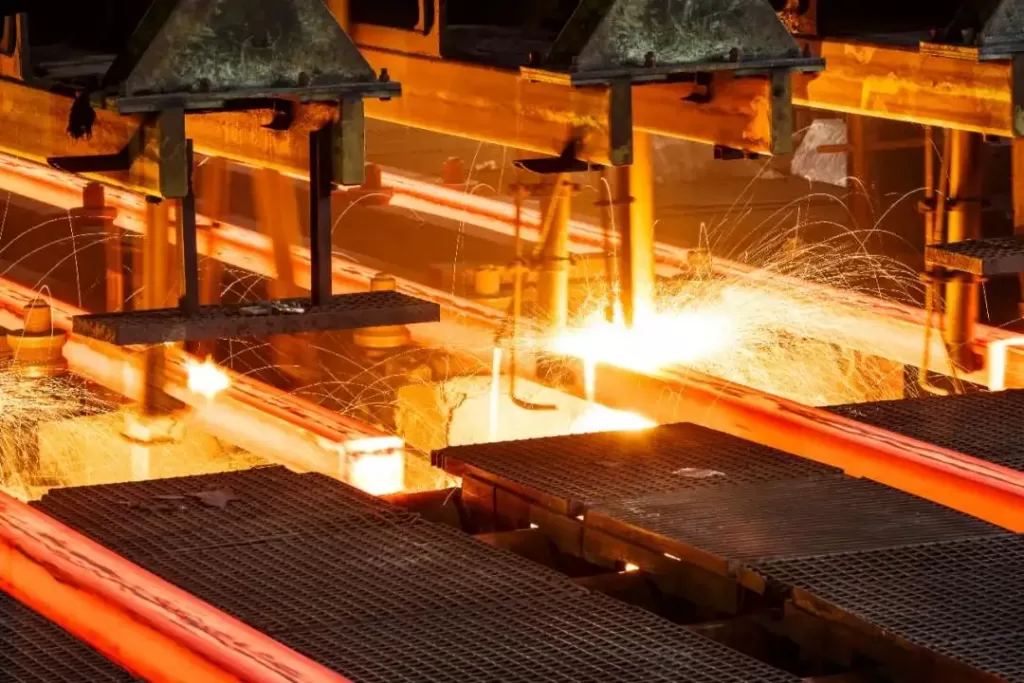
Welcome To Wuxi Ontime Industrial Co., Ltd

On April 14, the world iron and Steel Association (hereinafter referred to as the world iron and Steel Association) released the latest version of the short-term steel demand forecast report (2022-2023). The report shows that the global steel demand will continue to grow by 0.4% in 2022, reaching 1.840 billion tons, following the growth of 2.7% in 2021. In 2023, the global steel demand will continue to grow by 2.2% to 1881.4 million tons. The World Steel Association said that under the background of the conflict between Russia and Ukraine, there is a high degree of uncertainty in the current prediction results.
Commenting on the forecast results, m á Ximo vedoya, chairman of the Market Research Committee of the World Steel Association, said: “In 2021, despite the supply chain crisis and multiple rounds of COVID-19, the recovery momentum of steel demand in many parts of the world was stronger than expected. However, due to China’s economic slowdown, the growth rate of global steel demand decreased in 2021. There is still a high degree of uncertainty about the change of steel demand in 2022 and 2023. The expectations of the World Steel Association for a sustained and stable recovery of steel demand were shaken by the conflict between Russia and Ukraine and global inflation.
Global steel demand growth is expected to decrease in 2022.
Due to regional differences, the impact of the conflict between Russia and Ukraine varies, depending on the direct trade and financial risk exposure of each region to Russia and Ukraine. The conflict has had a direct and devastating impact on Ukraine, and the EU has also been affected due to its high dependence on Russian energy. Moreover, the impact of the conflict between Russia and Ukraine has also affected the world (especially the raw materials required for steel production) due to the rise in energy prices, resulting in the continuous interruption of supply chains in some regions. This problem has plagued the global steel industry even before the outbreak of the conflict.
The impact of the conflict between Russia and Ukraine continues to spill over. Superimposed on the slowdown of China’s economic growth, the World Steel Association predicts that the growth of global steel demand in 2022 is expected to decrease. In addition, the continued outbreak of COVID-19 in some parts of the world and the rising interest rate have also brought risks of economic downturn. The expected tightening of US monetary policy will increase the risk of financial vulnerability faced by emerging economies.
In 2023, the global steel demand forecast is highly uncertain. The World Steel Association said that the premise of this prediction is that the conflict between Russia and Ukraine will end in 2022. In addition, the geopolitical pattern surrounding Ukraine will have an extremely far-reaching impact on the global steel industry, including the adjustment of the global trade pattern, the transformation of energy trade and its impact on the energy transformation, and the continuous reconfiguration of the global supply chain.
China will maintain stability and show slight growth.
In 2021, as the Chinese government implemented strict control measures on real estate development, the growth rate of China’s steel demand slowed down significantly. In 2022, due to the efforts of the Chinese government to promote investment in infrastructure construction and continue to stabilize the real estate market, steel demand will remain stable. In addition, the stimulus measures launched by the Chinese government in 2022 are likely to promote a small increase in steel demand in 2023. If the deteriorating external environment causes China’s economic development to face more challenges, the Chinese government is expected to launch more powerful stimulus measures, which will bring upward economic potential.
The steel consumption industry is optimistic.
In 2021, despite the contraction of China’s construction activities, the construction activities in the world continued to recover from the blockade of the COVID-19 epidemic, and the steel demand increased by 3.4% year-on-year. In many countries and regions around the world, this recovery is driven by infrastructure investment. The World Steel Association believes that in the next few years, infrastructure investment and energy transformation investment may continue to drive the growth of steel demand in the construction industry. However, the construction industry also faces some resistance from high costs and interest rates. In addition, in the second half of 2021, the supply chain of the automotive industry encountered bottlenecks, which hindered the recovery of steel demand. The recovery of the global automotive industry in 2021 was disappointing. Despite the sharp decline in global automobile production, the steel demand in the electric vehicle market increased rapidly during the COVID-19 pandemic. In 2021, the global sales of electric vehicles will reach 6.6 million, almost double that of 2020. The proportion of electric vehicles in total vehicle sales increased from 2.49% in 2019 to 8.57% in 2021.